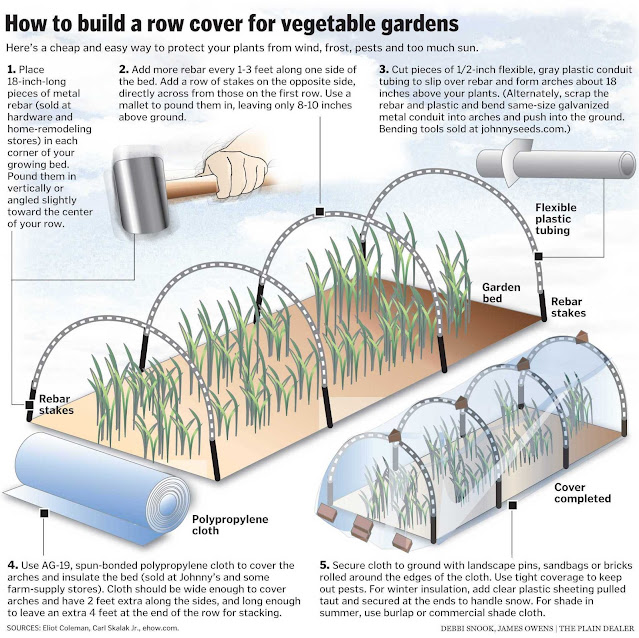Most gardens will benefit from some type of covering to protect them from the elements during at least part of the year.
Floating row covers help gardeners begin their growing season earlier and extend it later. Air- and water-permeable covers made from lightweight polyester fabric protect crops from frost, allowing a few extra weeks of growing time on the bookends of the season. For in-ground gardens and raised beds, you can make arches with PVC pipe and lay the cover on top for a dome effect. Attach the cover to the PVC with clamps to ensure it doesn’t blow off. For small plantings or for those in containers, placing upside- down plastic pots or cups on top of vulnerable plants works well. (Place a rock on top of the pot or cup to prevent it from blowing away.)
In some areas, wind damage is a major concern. Siting your garden on the south or southwest side of a structure or natural brush offers some protection. Well-anchored floating row covers can also protect lower-growing or young crops from wind.
Many gardeners find their biggest challenge isn’t the cold or wind, but heat. Particularly in the southern United States, the recommended full-sun location might translate to stressed plants when temperatures rise to almost 100°F. In this case, afternoon shade can help sun-loving crops such as tomatoes and peppers. If you grow in containers, move them to a shady location in the heat of the day. If you grow in raised beds or an in-ground garden, use shade cloths in place of floating row covers (floating row covers trap heat; shade cloths allow air circulation).
For other conditions necessitating extra protection, always consider your plants’ particular needs when deciding how to best cover your garden.








0 Comments